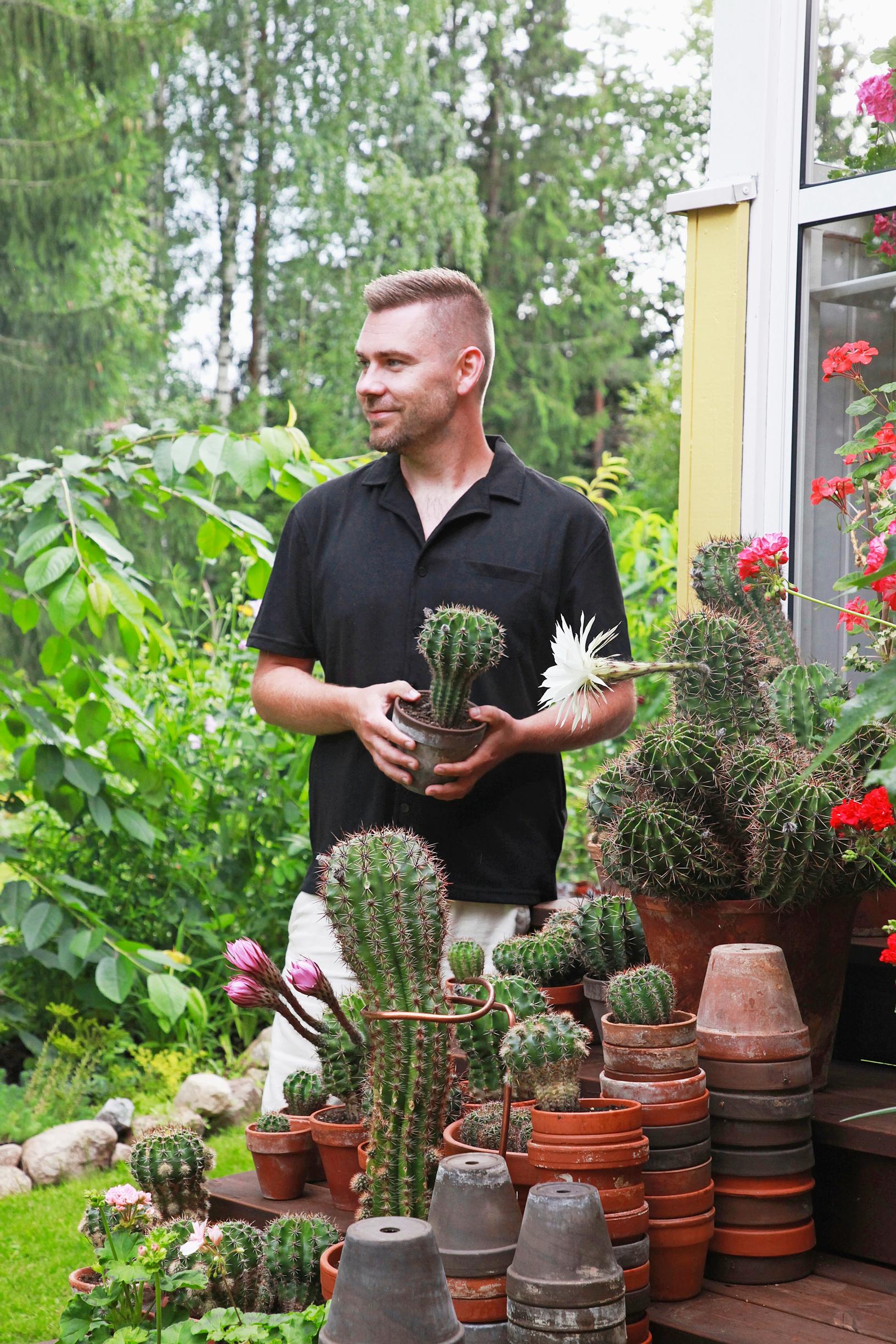
Jussi tends dozens of cacti with grill tongs: “Each hedgehog cactus is a rugged, lumpy character”
Thirty-four-year-old Jussi has a collection of hedgehog cacti, sometimes also called sea urchin cacti or Easter lily cacti. They spend half the year nearly forgotten in a corner, then perk up in summer and burst into bloom. Jussi handles them with grill tongs.
Six years ago, Jussi Halonen saw an intriguing collection in a Helsinki orangery, or winter greenhouse. The spiky ball-shaped cacti, known as hedgehog cacti, were growing in clay pots and made a strong impression. After seeing them, Jussi started acquiring both small and large prickly spheres from other growers and hobbyists.
Jussi’s hedgehogs spend summers outdoors and winters in a fairly cool living area, all squeezed in together.
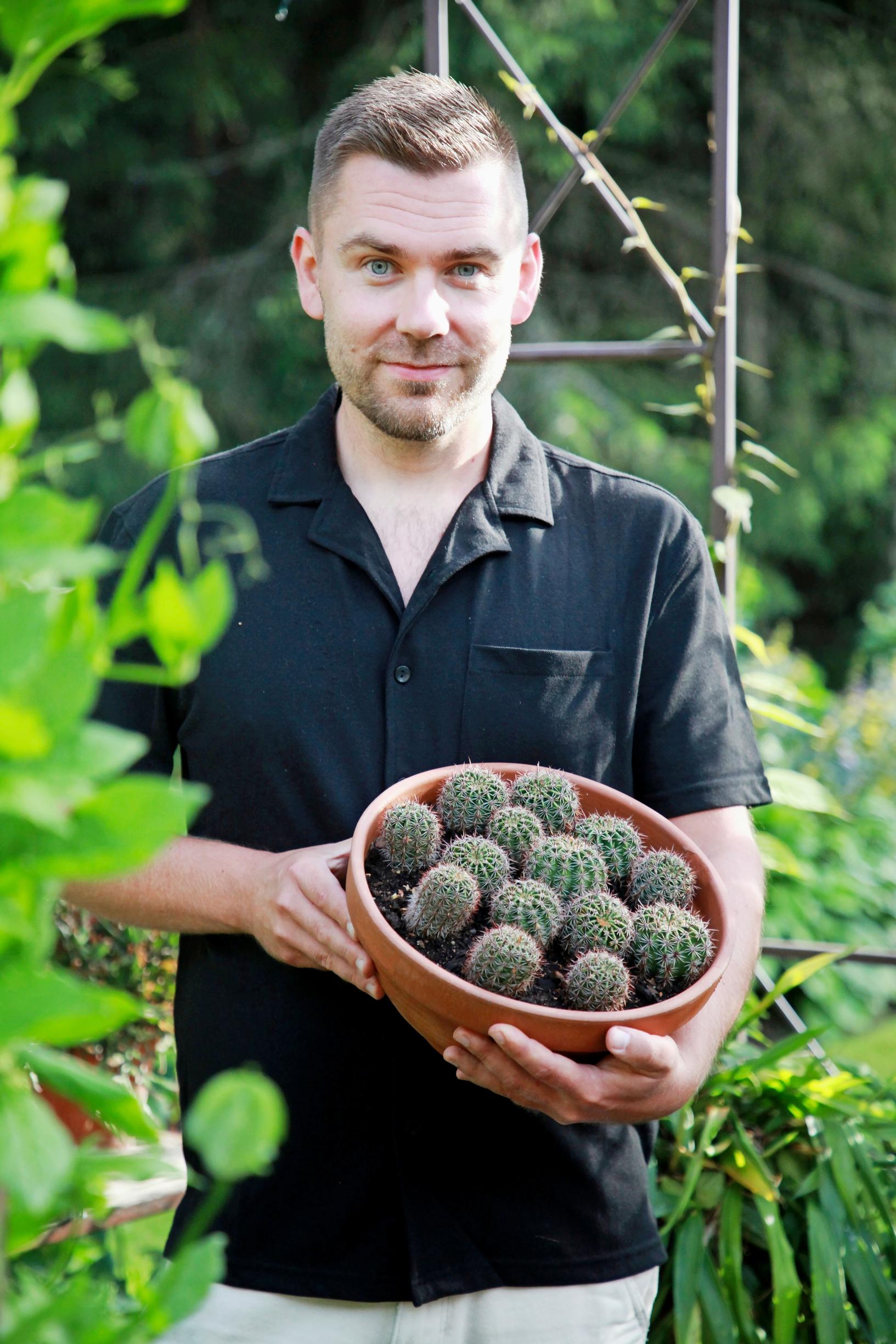
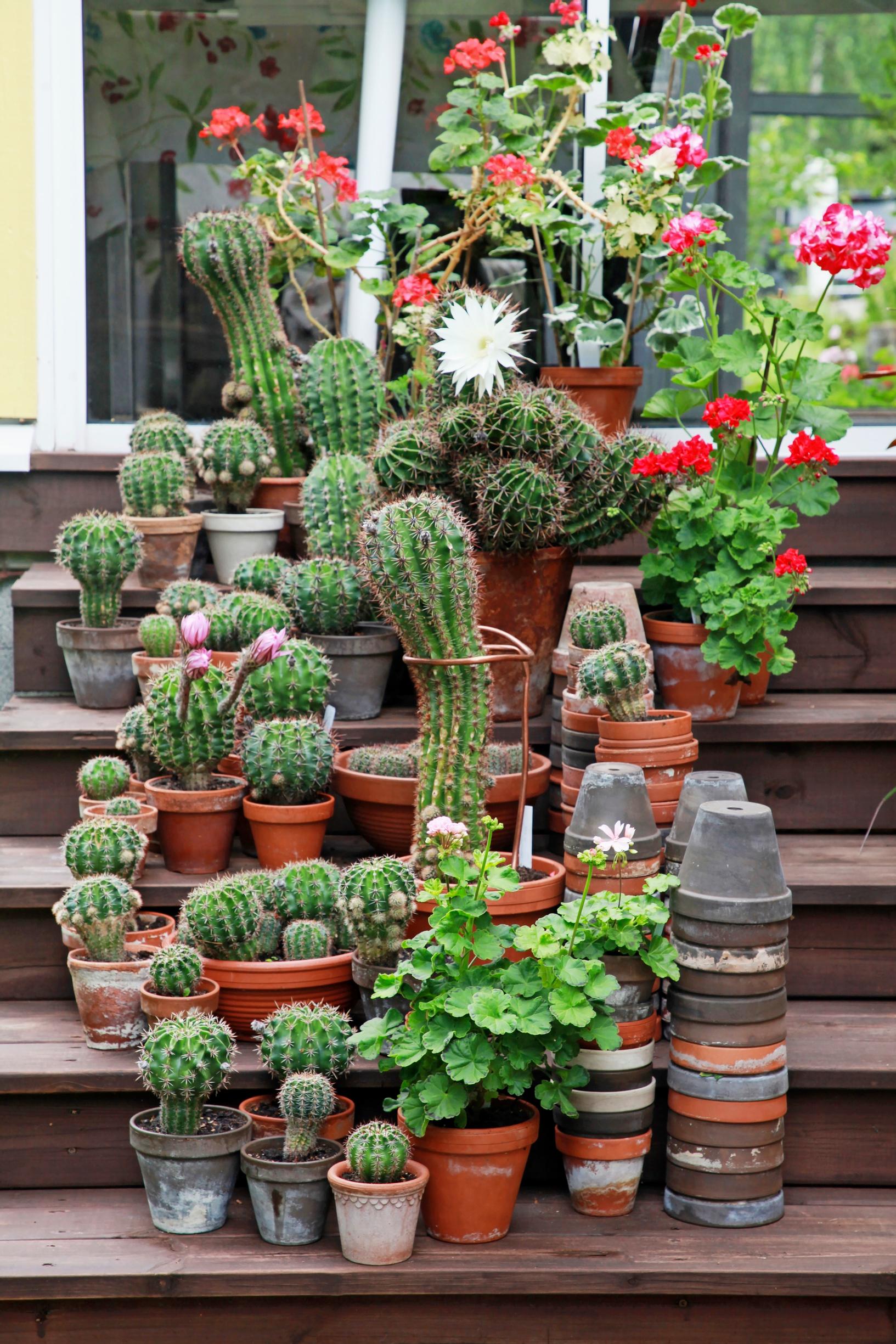
Jussi, what’s so fascinating about old hedgehog cacti?
Hedgehog cacti are rough, lumpy characters. Age adds texture, scars, and corky patches that make them look more striking.
Some people question why I keep so many cacti that look alike, but I tell them each one is different. I’ve gathered hedgehog cacti from many sources, so they come with different lineages and unique, twisty shapes. Some grow tall and columnar, others spread out wide. One lineage is said to have come from Vyborg in an evacuee transport. It barely makes any pups, while another type churns out loads of them.
“These cacti have all sorts of quirks and twists. Some are tall and columnar, while others bulge out to the sides.”
Do you try to make them bloom?
Flowers are a nice perk, but I don’t grow hedgehog cacti just for that. The bloom is short-lived—once it opens, it lasts only a day or two.
Hedgehog cacti typically bloom from May until August. It’s exciting to watch the bud stay tiny for ages, then suddenly lengthen and swell.
The flowers are large and pink, except for one that blooms white. The fragrance is perfume-like, especially at night.
I keep the hedgehog cacti on the terrace steps in summer, where they only get direct sun at midday and again in the evening. For better growth and flowering, they’d do well with more sun.
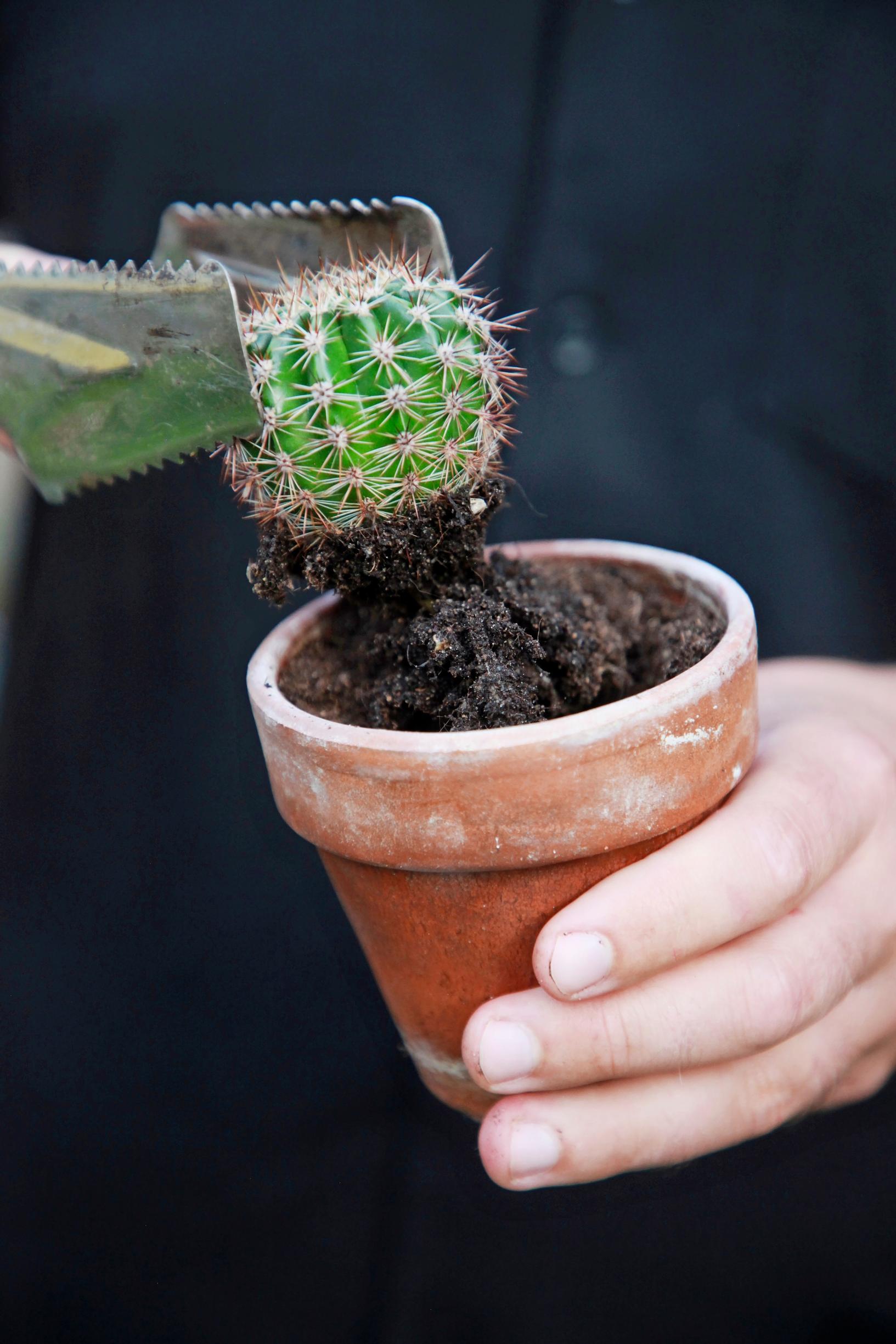
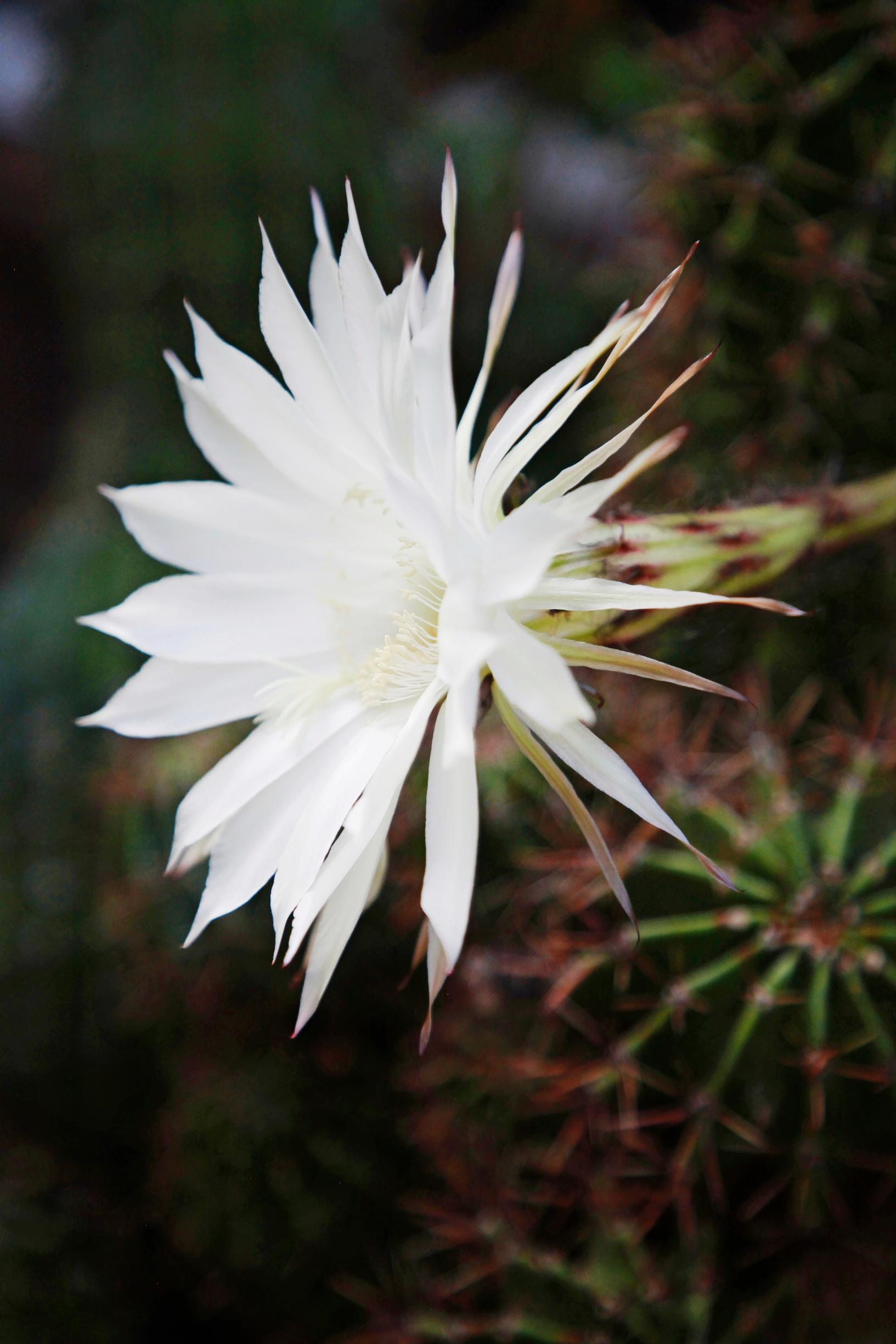
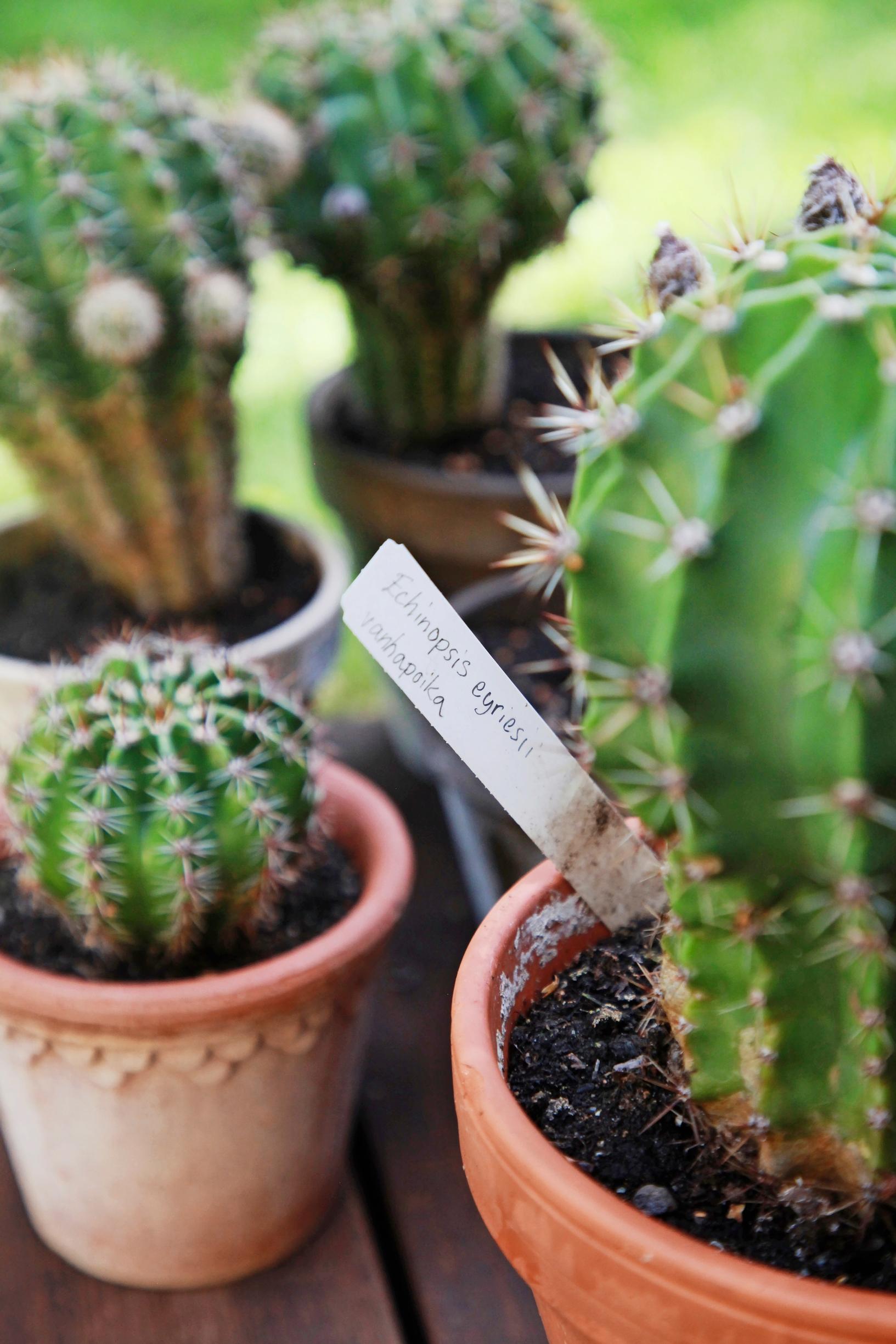
How do you avoid the spines?
The hardest part is carrying them outside in spring and back in during fall. Large cacti can be surprisingly heavy, but so far, I’ve managed even the biggest ones without special gear.
Last summer, I got a cactus spine deep in my hand, and it got infected before finally coming out. That’s the worst I’ve experienced.
I postpone repotting as long as possible, only switching to a new pot when a cactus stops growing or starts toppling over. I choose a considerably bigger pot so I don’t have to repot again the next spring.
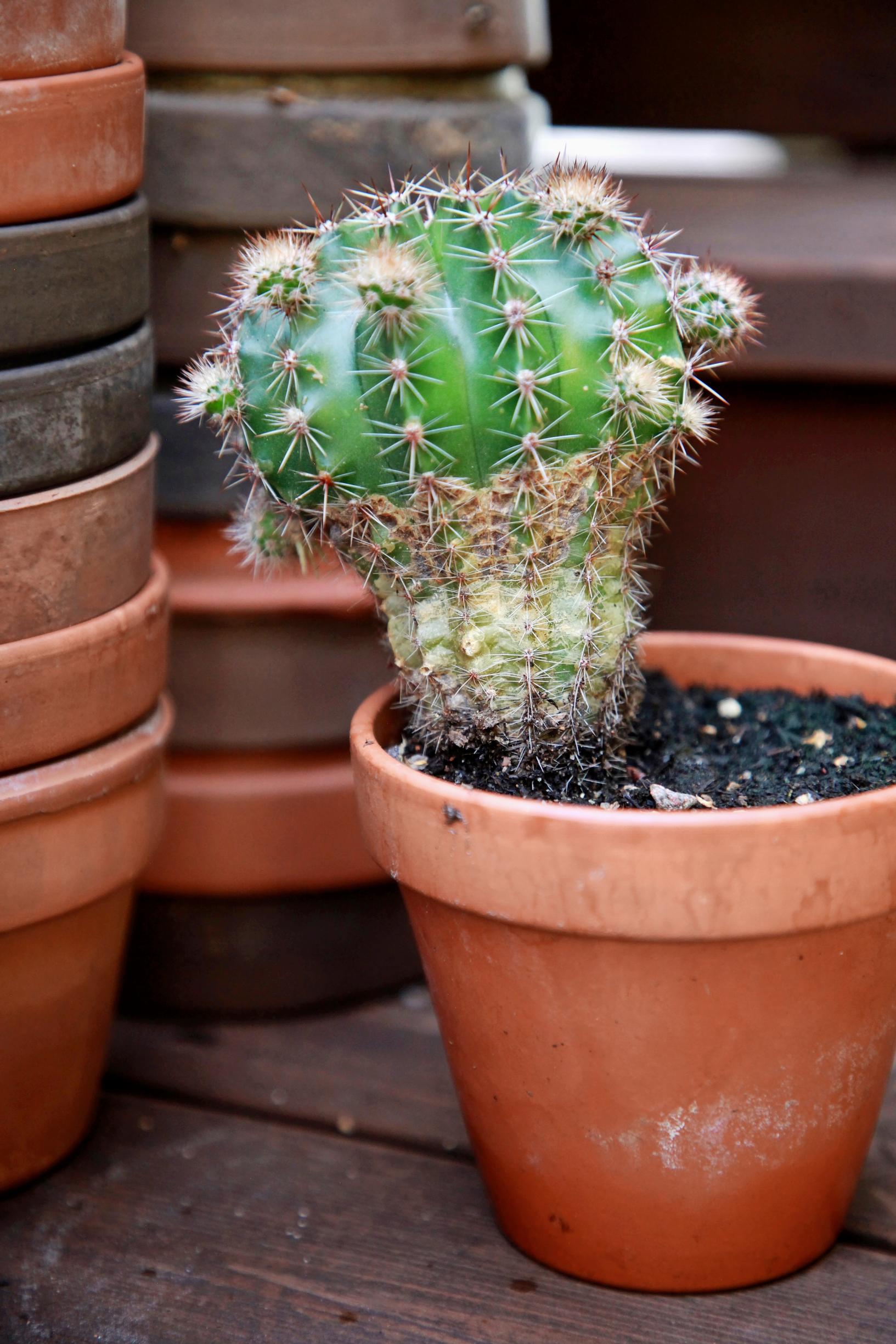
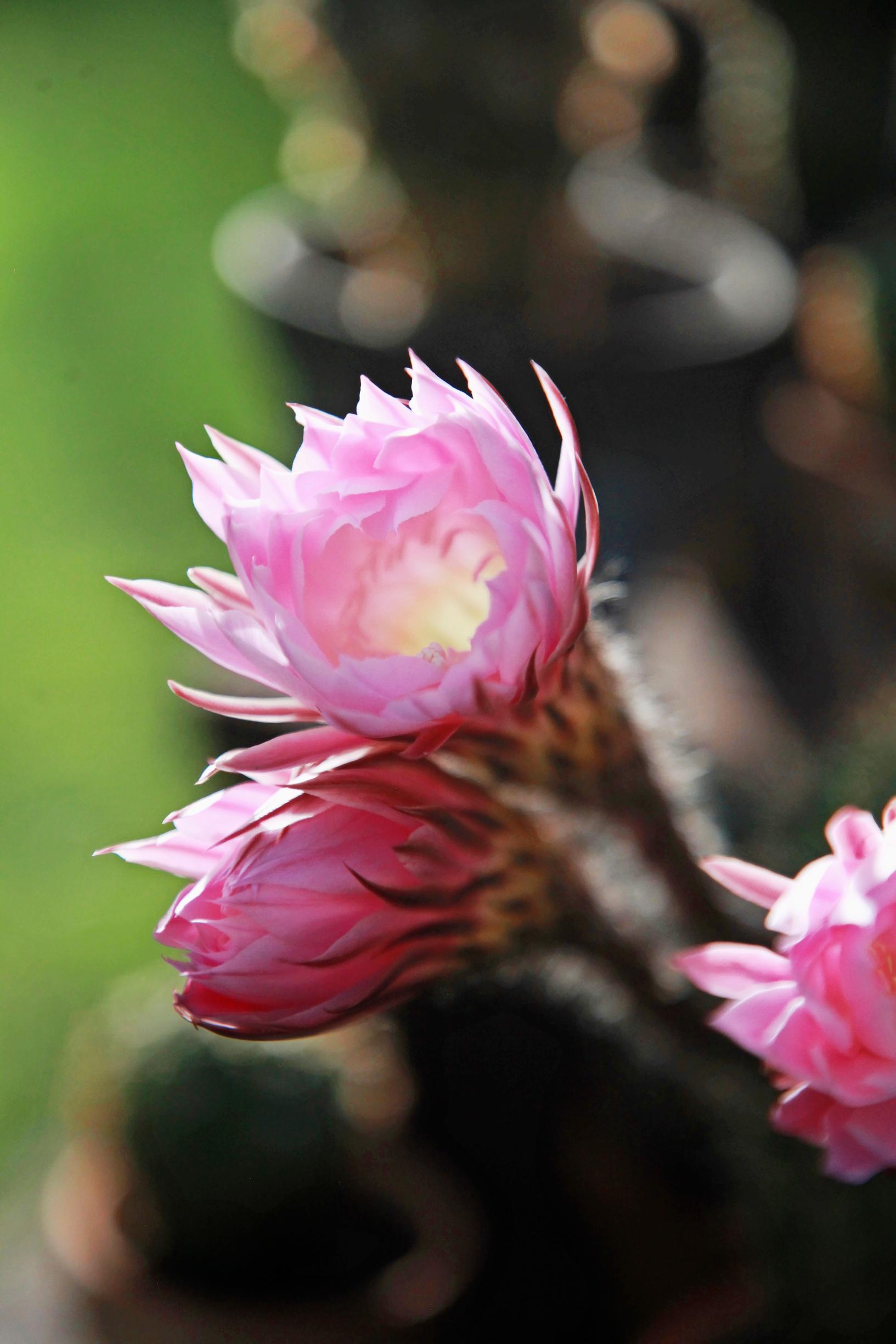
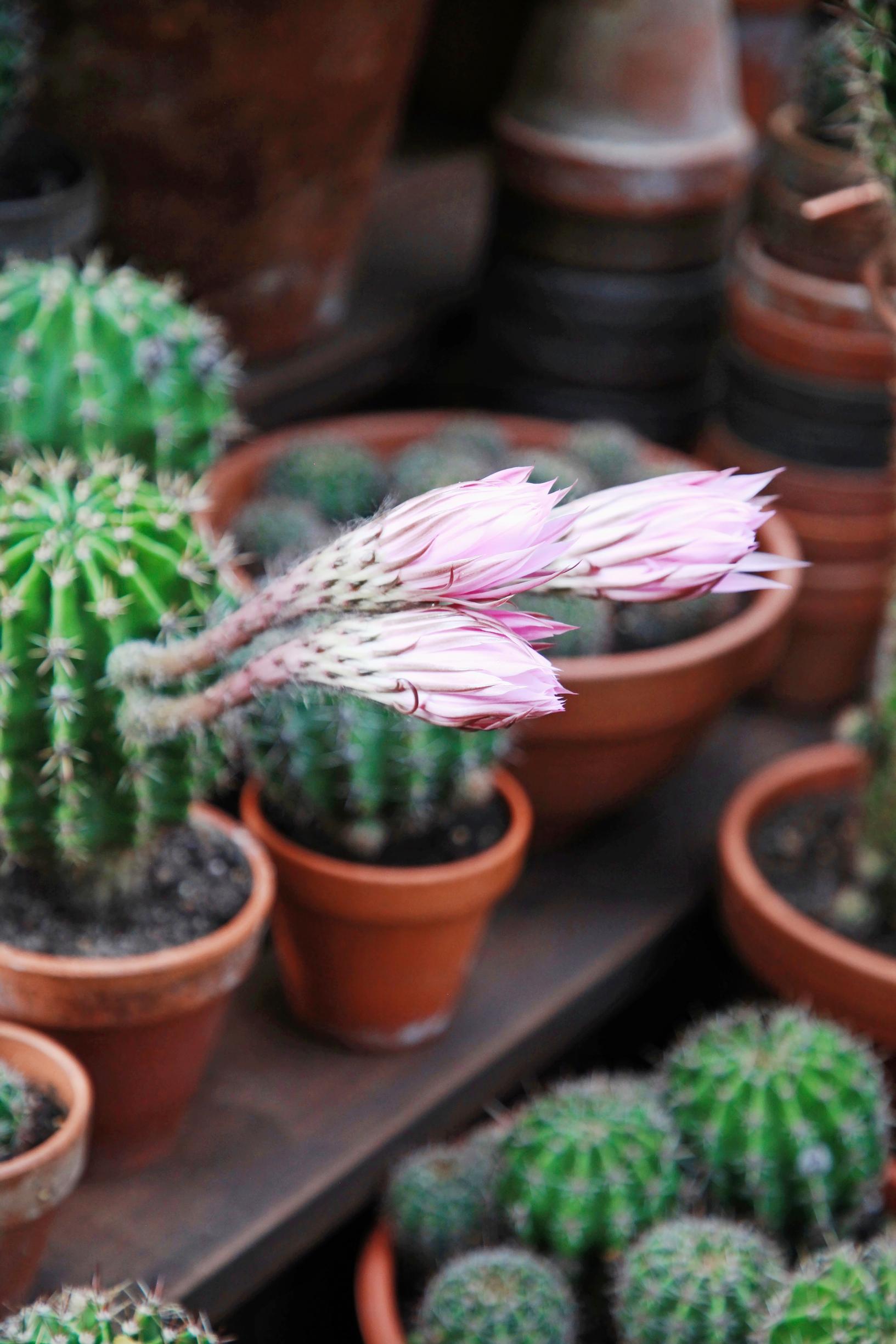
Have you had any setbacks in taking care of them?
Sometimes, hedgehog cacti get mealybugs or mites in winter, so I treat them as needed. I don’t sweat a small bug problem because the plants tolerate it well. When I move them outside in the spring, the bugs usually vanish.
Even though the cacti stay under bright LED lights with minimal watering in winter, they still get a narrower growth ring on the stem. If a cactus ends up with a skinny section followed by a chunkier top, I just cut it off without making a fuss.
You can root the top part to grow a new plant. I don’t keep the bottom because it looks unsightly for a while, until new pups hide the cut.
“After winter, the old bachelors are pale and blotchy and burn easily in the sun.”
Are hedgehog cacti hard to look after?
Hedgehog cacti are resilient and low-maintenance, like many older houseplants. You can practically leave them in a corner all winter and then take them outside when spring arrives.
Last fall, I wedged them so tightly in a space that I couldn’t water them until January. I keep them in a bedroom with the door shut because of my cats, stacking them on shelves and under tables.
After winter, the hedgehog cacti are pale and blotchy, and they burn easily in strong sunlight. But they soon bounce back. Once they get a good supply of fertilizer and water in warm weather, they plump up and shoot skyward in no time. A small offshoot can grow to about half a meter tall in four years.
Watching them grow and raising pups from tiny nubs to big plants is the best part of this hobby. I don’t need them all to become huge—I like the variety of different sizes. I love the tall, columnar ones, but the little round babies are adorable too.
Jussi’s tips for cactus care
- Grill tongs are handy for repotting. For large cacti, you’ll need hefty gloves and newspapers.
- You can start a new plant from a cut cactus. Even a thick cactus will root easily if you let the cut surface dry for a month before potting it.
- Cacti kept indoors need protection from sunlight at first. I typically bring my cacti out in early May and cover them with garden fleece.


